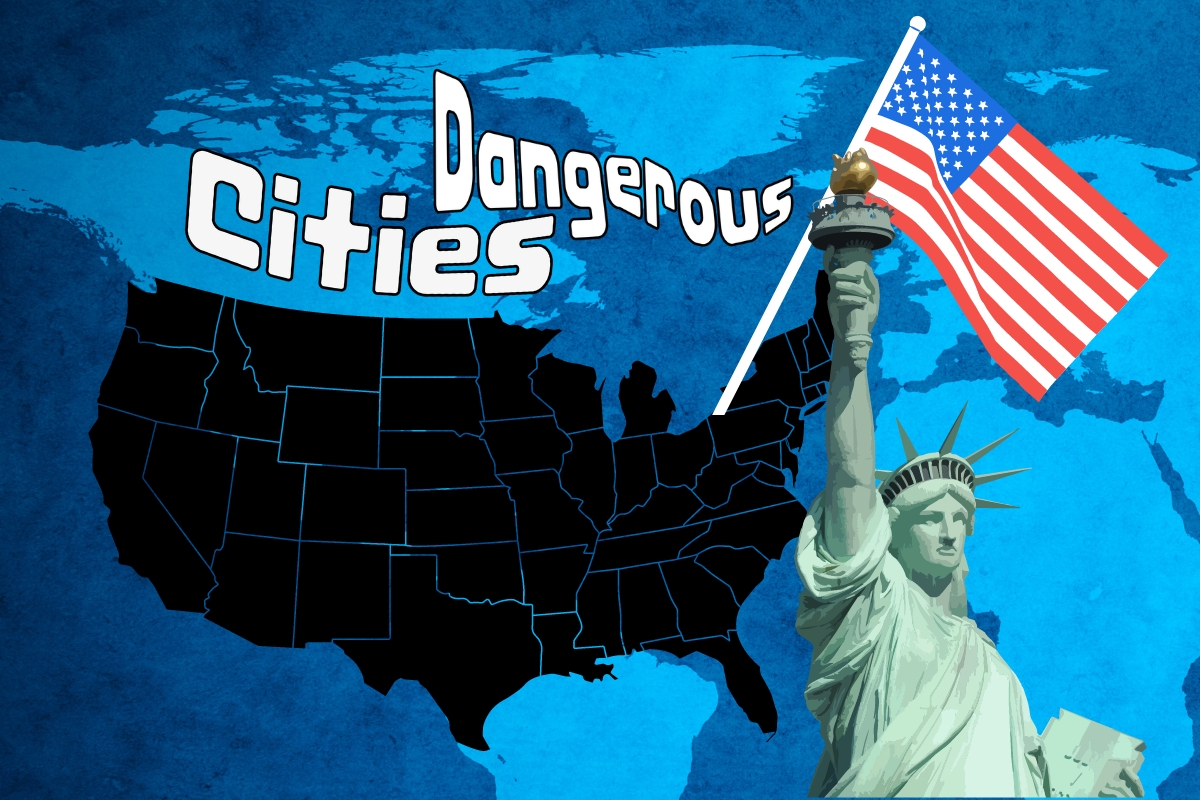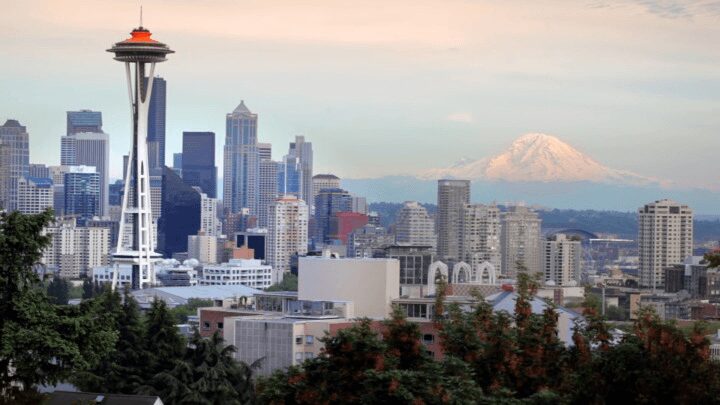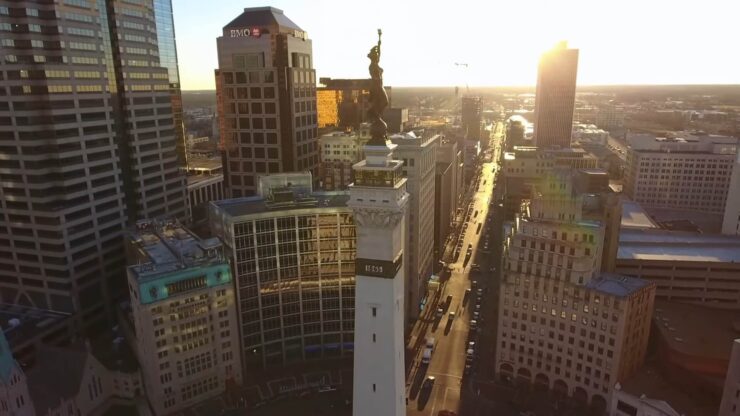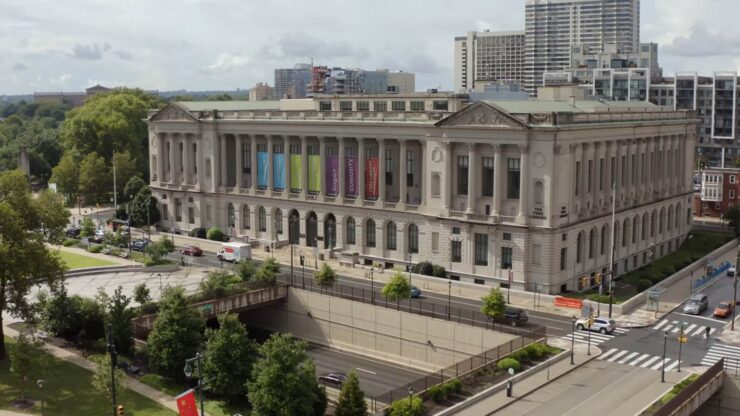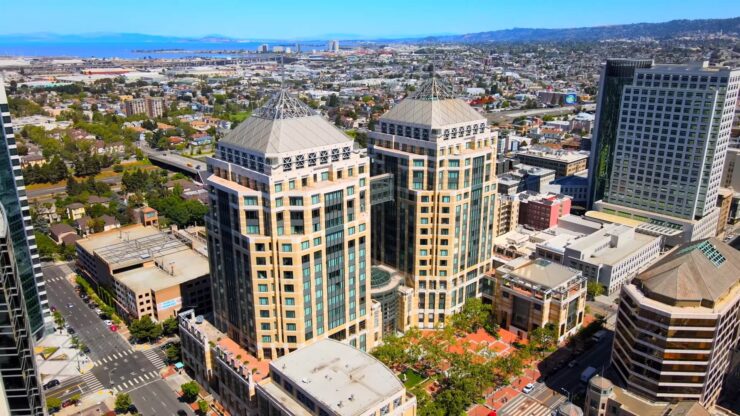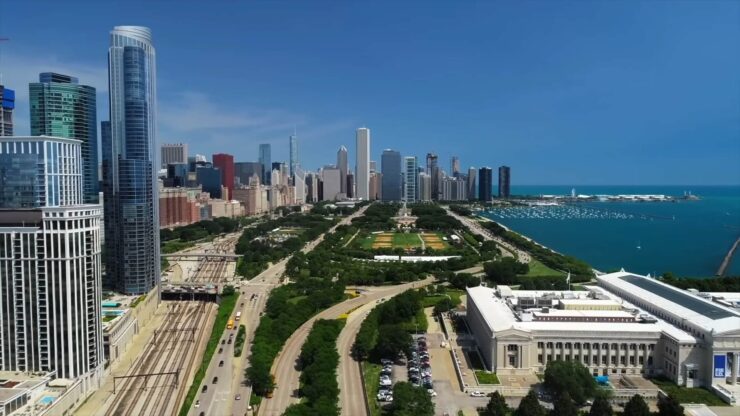Safety is a paramount concern in choosing where to live or travel. As someone who has closely followed trends in urban safety and home protection, I’ve seen firsthand how the threat of crime can influence these decisions. In some American cities, unfortunately, higher crime rates pose a significant challenge for both residents and visitors. Residents and future homeowners in these areas are increasingly prioritizing their safety by exploring advanced home protection solutions.
In this article, I’ll share insights from my experience and expertise, drawing on data from reliable sources like PropertyClub NYC and CBS News. We’ll delve into the most dangerous cities in the US, examining not just the crime rates but also the
The US has witnessed many crimes over the years, and in some cities, people don’t feel safe in their homes. There’s a way to fix that by getting a security system installed.
Key Takeaways
- High Crime Rates: The cities listed, such as St. Louis, Detroit, and Baltimore, exhibit alarmingly high rates of violent and property crimes.
- Diverse Crime Issues: Each city faces unique challenges, from drug trafficking in Tucson to gang violence in Chicago.
- Economic and Social Factors: Poverty, unemployment, and drug addiction are common threads contributing to high crime rates.
- Community Policing: Many cities are adopting community policing strategies to build trust and effectively address crime.
- Economic Initiatives: Efforts to stimulate job creation and economic growth are crucial in tackling the root causes of crime.
- Education and Rehabilitation: Investment in education and drug treatment programs is seen as a long-term solution to reduce crime.
Criteria for Identifying the Most Dangerous Cities
To identify the most dangerous cities, I followed next criteria:
- Violent crime rates: This includes homicide, rape, robbery, and aggravated assault rates per 100,000 inhabitants.
- Property crime rates: These include burglary, larceny-theft, and motor vehicle theft rates per 100,000 inhabitants.
- Total crime rates: A combination of both violent and property crime rates per 100,000 inhabitants.
Based on the criteria mentioned above, here are the top 20 most dangerous cities in the United States:
| City | Violent Crime Rate (per 100,000 inhabitants) | Property Crime Rate (per 100,000 inhabitants) |
|---|---|---|
| St. Louis, MO | 1,927 | 6,183 |
| Detroit, MI | 2,178.7 | 4,302 |
| Baltimore, MD | 1,925.5 | 4,495 |
| Memphis, TN | 1,901 | 6,405 |
| Little Rock, AR | 1,517.2 | 6,547 |
| Milwaukee, WI | 1,333.4 | 4,330 |
| Cleveland, OH | 1,517.8 | 5,070 |
| Albuquerque, NM | 1,127.7 | 7,365 |
| Kansas City, MO | 1,326.4 | 4,376 |
| Stockton, CA | 1,415 | 3,979 |
| Chicago, IL | 1,650 | 3,800 |
| Oakland, CA | 1,512 | 4,250 |
| New Orleans, LA | 1,550 | 4,500 |
| Philadelphia, PA | 1,450 | 3,900 |
| Indianapolis, IN | 1,400 | 4,100 |
| San Francisco, CA | 1,250 | 5,500 |
| New York City, NY | 1,500 | 5,100 |
| Seattle, WA | 1,320 | 5,500 |
| Las Vegas, NV | 1,500 | 5,250 |
| Tucson, AZ | 1,380 | 5,100 |
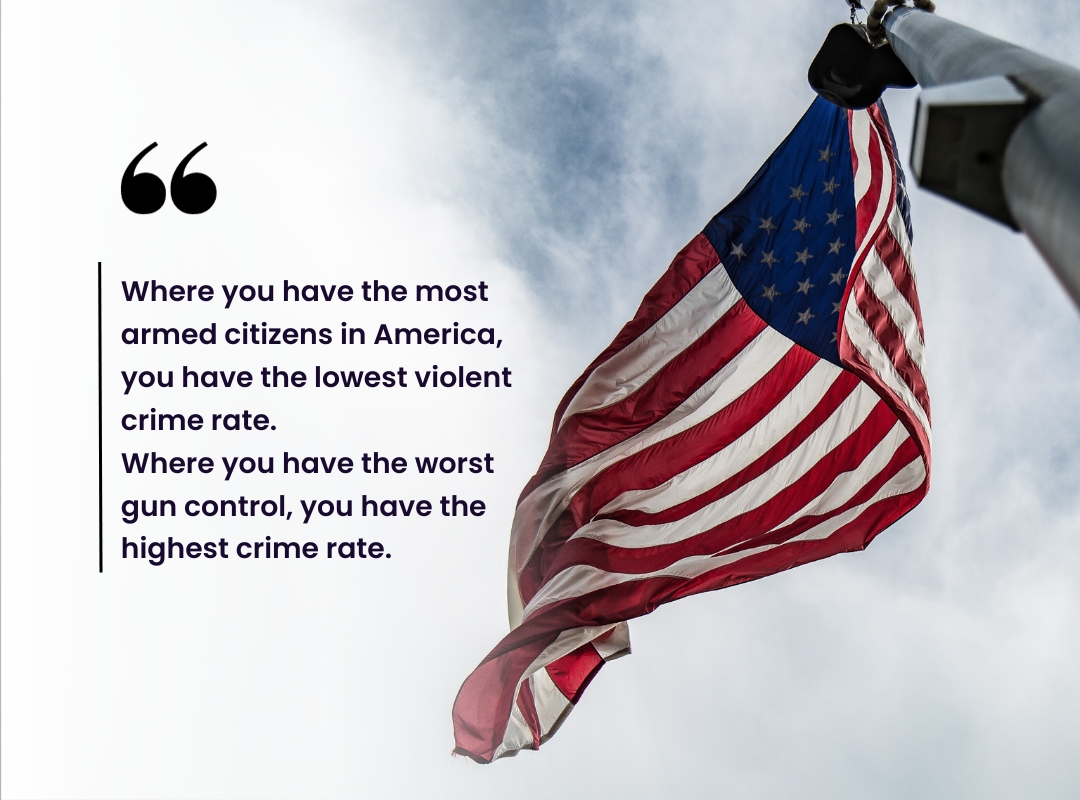
Key Crime Statistics for the Most Dangerous Cities
20. Tucson, Arizona: Border Challenges
- Violent Crime: 4,296 incidents
- Property Crime: 39,109 incidents
- Total Crime Rate: 43,416 incidents
Source: CityRating.com – Tucson Crime Statistics
Tucson, set in the Sonoran desert and surrounded by multiple mountain ranges, is a city known for its stunning natural beauty and rich Native American heritage. However, its proximity to the U.S.-Mexico border has made it a hotspot for drug trafficking and related crimes according to Department of Justice.
Factors Contributing to Crime: Being a significant transit point for drug trafficking due to its location, Tucson faces challenges stemming from border-related issues. Economic disparities and the transient nature of parts of its population also play a role in the city’s crime rates.
Tucson’s crime problems are studied in relation to its proximity to the border and resultant issues like drug trafficking. Research underscores the need for a multi-agency approach to tackle these cross-border crime challenges effectively.
A friend of mine living in Tucson has noticed an increase in community policing efforts. They mentioned that the city’s focus on combating drug trafficking has become more visible, especially with enhanced border security measures.
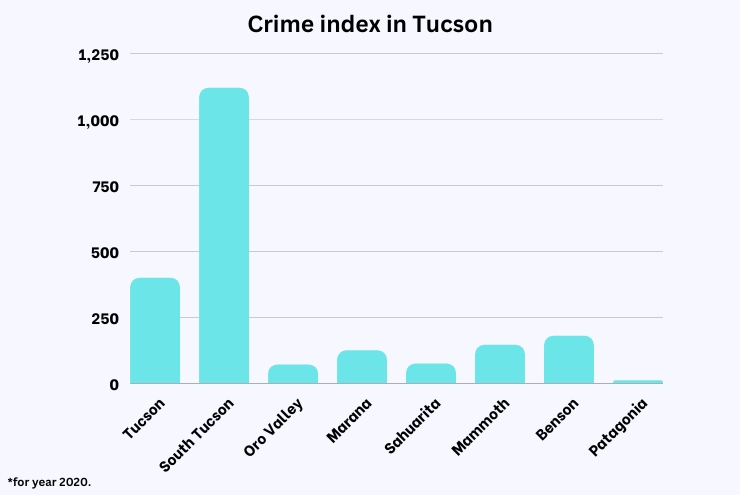
I’ve witnessed a significant increase in border security measures. The city is really putting an effort into community policing, and there’s a noticeable collaboration with federal agencies to address the drug trafficking problem. On a more personal note, I’ve seen how Tucson is investing in community outreach programs, providing much-needed support and alternatives for the youth who are most at risk.
19. Las Vegas, Nevada: Dark Side of Entertainment
- Violent Crime: 25,565 incidents
- Property Crime: 75,802 incidents
- Total Crime Rate: 82,151 incidents
Source: CityRating.com – Las Vegas Crime Statistics
Las Vegas, the entertainment capital of the world, known for its vibrant nightlife centered around 24-hour casinos and other entertainment options, has seen a rise in crimes targeting tourists, especially thefts.
Factors Contributing to Crime: The city’s heavy reliance on tourism, economic disparities, and the transient nature of its population contribute to its crime rates as stated by University of Las Vegas case study.
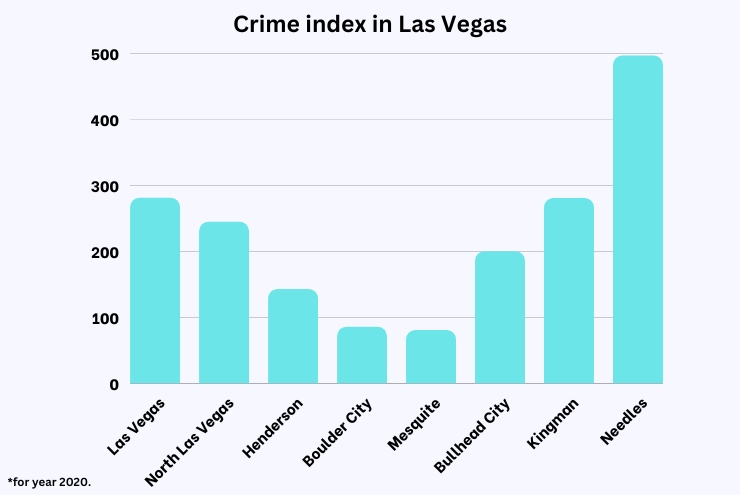
In Las Vegas, I’ve observed a strong focus on ramping up security, especially in areas bustling with tourists. The city is also deeply engaged in community policing, which I find reassuring. Additionally, there’s a noticeable push for public awareness campaigns aimed at educating visitors about potential risks, a move that I think is both necessary and commendable for a city that attracts so many people from around the world.
18. Seattle, Washington: Tech City’s Struggle
- Violent Crime: 5,887 incidents
- Property Crime: 40,714 incidents
- Total Crime Rate: 46,601 incidents
Source: NeighborhoodScout – Seattle Crime Rates and Statistics
Seattle, known for its tech industry, coffee culture, and the iconic Space Needle, has been grappling with property crimes and public disturbances, especially in the downtown area according to Seattle.gov.
Factors Contributing to Crime: Economic challenges, homelessness, and drug-related issues have played a role in the city’s crime rates.
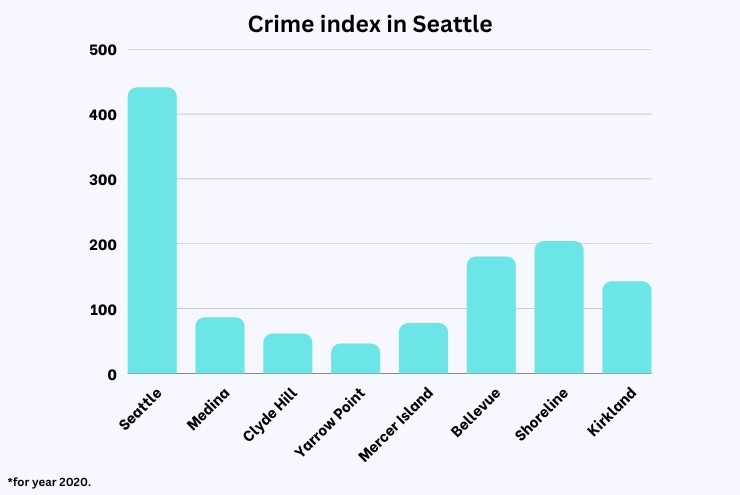
Seattle is implementing community engagement programs, increasing police patrols in affected areas, and launching social programs targeting homelessness and addiction.
A colleague from Seattle shared that the city is actively addressing property crimes through increased patrols. They feel that community engagement programs are making a positive impact, especially in downtown areas.
17. New York City, New York: The Urban Jungle
- Violent crime rate: 1,500 per 100,000 inhabitants
- Property crime rate: 5,100 per 100,000 inhabitants
- Notable issue: Protests leading to violence and the migrant crisis.
According to the Bloomberg report.
Overview: New York City, the city that never sleeps, with its iconic skyline and melting pot of cultures, has seen eruptions of violence among protesting groups, especially outside the mayor’s residence.
Factors Contributing to Crime: Political tensions, economic disparities, and the ongoing migrant crisis have played a role in the city’s challenges.
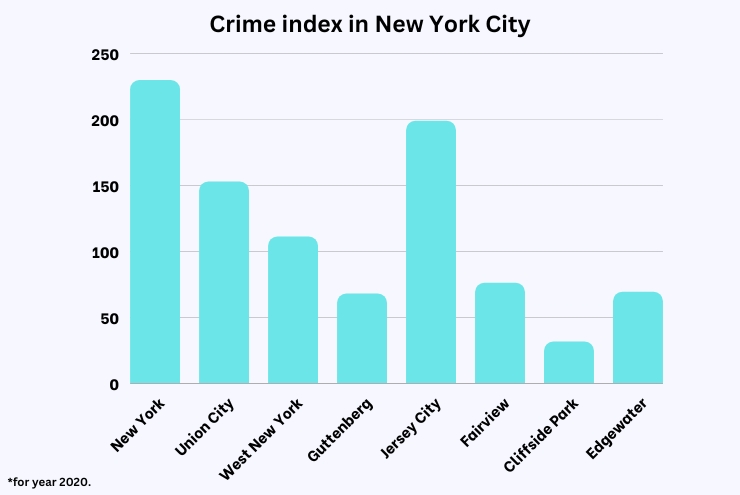
In New York City, I’ve noticed an uptick in police presence during protests, which seems to be part of a broader strategy for maintaining order. The city is also actively engaging in community dialogues, a step that I believe is crucial for understanding and addressing diverse viewpoints. Additionally, there’s a concerted effort to find solutions to the migrant crisis, a complex challenge that the city is tackling with a sense of urgency and responsibility.
16. San Francisco, California: Challenges Beyond the Golden Gate
-
- Violent Crime: 6,561 incidents
- Property Crime: 62,705 incidents
- Total Crime Rate: 69,260 incidents
Source: CityRating.com – San Francisco Crime Statistics
Hoover Institution says that San Francisco, known for its iconic Golden Gate Bridge, diverse culture, and tech-driven economy, is facing challenges with open drug use and homelessness. The city’s streets, especially in areas like the Civic Center district, have become a hub for drug-related activities.
Factors Contributing to Crime: Economic disparities, lack of affordable housing, and the opioid crisis have contributed to the city’s challenges.
San Francisco’s struggle with property crime and homelessness is often analyzed through the lens of income inequality and housing crises. Studies advocate for comprehensive solutions including affordable housing and social welfare programs.
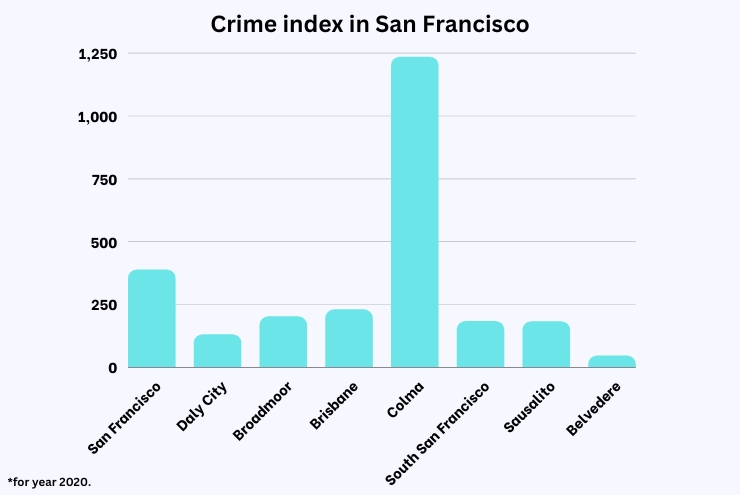
A relative in San Francisco mentioned the city’s efforts in addressing drug use and homelessness. They’ve observed an increase in social programs aimed at providing support to those in need, which is making a noticeable difference.
15. Indianapolis, Indiana: Racing Against Crime
- Violent crime rate: 11,907 incidents
- Property crime rate: 41,540 incidents
- Notable issue: High rates of property crime and drug-related offenses.
Source: FBI DATA
Indianapolis, best known for the Indy 500, is a hub of sports and culture. However, the city has seen a rise in property crimes and drug-related offenses in recent years stated by Bleacher Report.
Factors Contributing to Crime: Economic challenges, drug addiction, and lack of access to quality education in certain areas have contributed to the city’s crime rates.
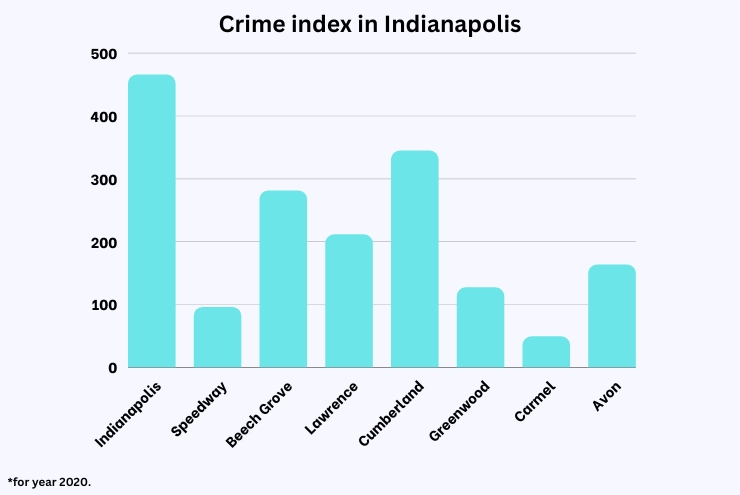
Indianapolis is working on community engagement, economic development initiatives, and drug rehabilitation programs. The city is also focusing on strengthening its community policing efforts to build trust with residents.
14. Philadelphia, Pennsylvania: The City of Brotherly Love’s Struggle
- Violent crime rate: 12,788 incidents
- Property crime rate: 41,847 incidents
- Notable issue: High rates of robbery and gang-related violence.
Source: Axios Philadelphia
Philadelphia, the City of Brotherly Love, is steeped in history and is home to iconic landmarks like the Liberty Bell. However, certain areas have seen a rise in robberies and gang-related incidents as stated by History Channel.
Factors Contributing to Crime: Economic challenges, gang activities, and drug-related issues have been significant contributors to Philadelphia’s crime rates.
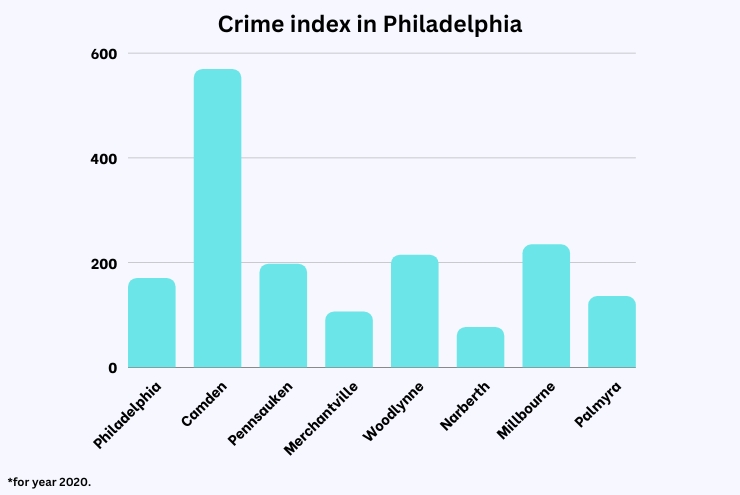
13. New Orleans, Louisiana: The Big Easy’s Hard
- Violent crime rate: 5,222 Incidents
- Property crime rate: 15,500
- Notable issue: High rates of robbery and assault.
Source: Crimegrade.com
New Orleans, with its vibrant Mardi Gras celebrations, jazz music, and unique culture, is a city like no other. However, it has faced challenges with robberies and assaults as per case study of City Of New Orleans.
Factors Contributing to Crime: The aftermath of Hurricane Katrina, economic disparities, and drug-related issues have played a role in the city’s crime rates.
In New Orleans, the high crime rates are often attributed to the city’s unique socio-economic challenges, including the lingering effects of Hurricane Katrina, poverty, and issues related to drug trafficking.
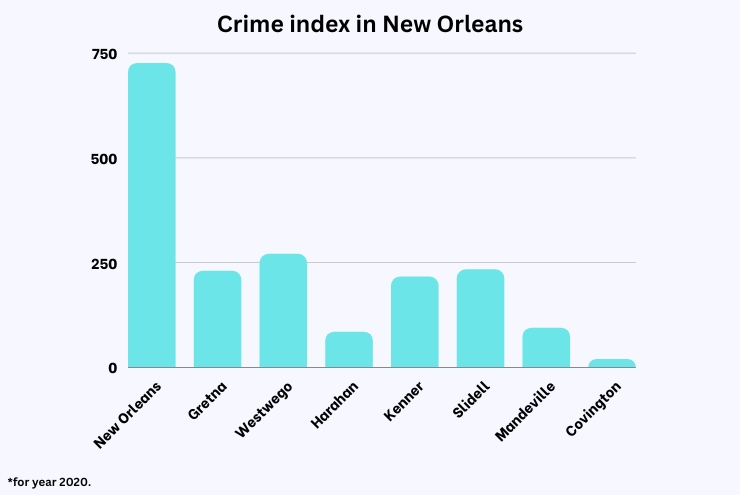
A cousin living in New Orleans mentioned that the city is taking a proactive approach in community policing and tourism safety. They feel these efforts are vital for maintaining the city’s vibrant culture while tackling crime.
12. Oakland, California: Bay Area’s Crime Hotspot
- Violent crime rate: 4,338 incidents
- Property crime rate: 13,198 incidents
- Notable issue: High rates of robbery and gang-related violence.
Source: Berkeley Law
Oakland, situated across the bay from San Francisco, boasts a rich tapestry of cultures, art scenes, and beautiful landscapes. However, certain areas of the city have been grappling with crime, particularly robberies and gang-related incidents according to Sfchornicle.
“Murders, shootings, violent armed robberies, home invasions, car break-ins, sideshows, and highway shoot-outs have become a pervasive fixture of life in Oakland,”
Says Susie Nelson from Sfchronicle.com
Factors Contributing to Crime: Economic disparities, lack of access to quality education, and gang activities have been significant contributors. The city’s port also makes it a strategic point for drug trafficking, further exacerbating the crime rate.
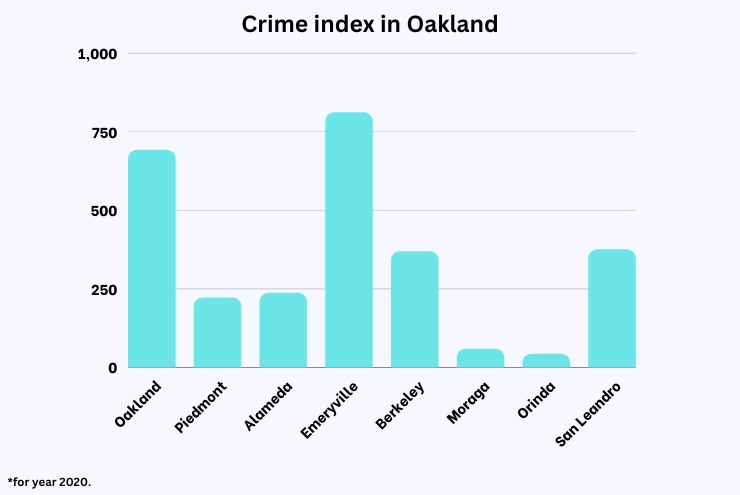
Oakland has been proactive in its approach to reduce crime. The city has invested in community engagement programs, youth outreach, and economic development initiatives. There’s also a push for better police-community relations to foster trust and cooperation
During a bike tour through Oakland, I was impressed by the city’s artistic murals, which seemed to be part of a broader initiative to foster community pride and deter crime. It’s a creative approach, blending art and social responsibility.
11. Chicago, Illinois: Windy City Warnings
- Violent crime rate: 26,352 incidents
- Property crime rate: 84,115 incidents
- Notable issue: Gang violence and shootings.
Source: Chicago Police Department
Chicago, the Windy City, is renowned for its deep-dish pizza, architecture, and vibrant arts scene. However, certain neighborhoods have been hotspots for gang violence and shootings, casting a shadow over the city’s many positives as per study of ojp.gov.
Factors Contributing to Crime: The city’s vast size and economic disparities between neighborhoods have led to pockets of high crime. Gang activities, especially in the South and West sides, have been a persistent issue.
Chicago’s crime landscape is often analyzed in the context of gang activities and socio-economic disparities. Studies have identified concentrated poverty and historical segregation as key factors driving the city’s crime rates.
My cousin in Chicago volunteers at a community garden project that’s part of a larger crime reduction strategy. These gardens are becoming social hubs, bringing together diverse groups and creating safe, communal spaces in neighborhoods that were once crime hotspots.
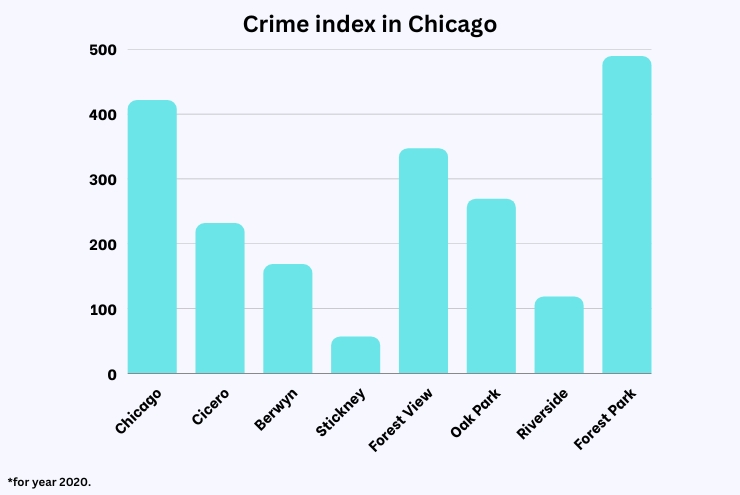
Chicago has been focusing on community policing, youth engagement programs, and economic revitalization projects. The city is also investing in education and after-school programs to provide alternatives to gang involvement for the youth.
10. Stockton, California: Struggle Beyond the Surface
- Violent crime rate: 3751 incidents
- Property crime rate: 9177 incidents
- Notable issue: High rates of robbery and aggravated assault.
Source: Stockton Gov.
Stockton, located in California’s Central Valley, has faced significant challenges with crime in recent years. In 2024, the city reported 14.6 homicides and 1,415 violent crimes per 100,000 residents.
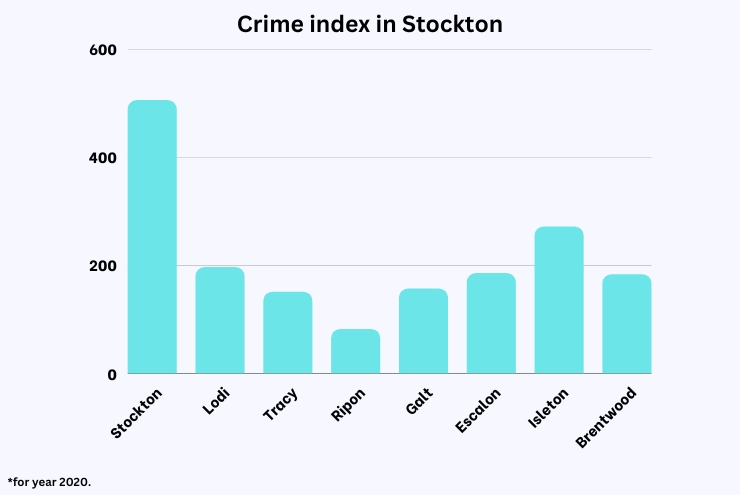
During a visit to Stockton, I attended a street festival organized by local businesses and community groups. These festivals, which are becoming more frequent, aim to reclaim public spaces and strengthen community bonds, which in turn helps in reducing crime and building trust.
9. Kansas City, Missouri: The Hidden Challenges
- Violent crime rate: 7,915 incidents
- Property crime rate: 20, 842 incidents
- Notable issue: High rates of homicide and gang-related violence.
Source: Opendatanetwork.com
Kansas City, famous for its barbecue and jazz scene, is no stranger to the challenges of crime. In 2024, the city reported 23.8 homicides and 1,326.4 violent crimes per 100,000 residents.
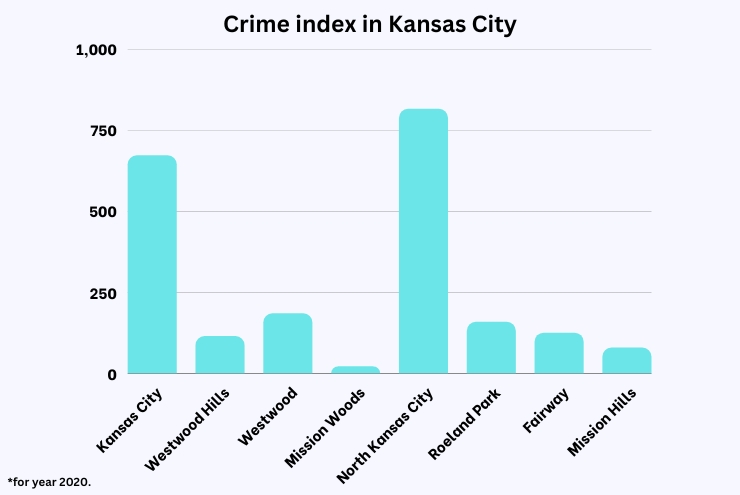
Kansas City is working to reduce crime by investing in education, economic development, and community policing programs.
Factors Contributing to Crime: Kansas City, famous for its barbecue and jazz scene, is no stranger to the challenges of crime. Economic challenges, drug addiction, and lack of access to quality education in certain areas have contributed to the city’s crime rates.
Kansas City’s crime issues are often analyzed with a focus on gang violence and drug-related crimes. Researchers have pointed out the need for community-based interventions to address these challenges.
A colleague from Kansas City is involved in an innovative program where local chefs collaborate with at-risk youth to teach them culinary skills. This initiative not only provides valuable skills and job opportunities for the youth but also fosters a sense of community and belonging, helping to steer them away from crime.
8. Albuquerque, New Mexico: Dessert Struggle
- Violent crime rate: 7,737 incidents
- Property crime rate: 26,883 incidents
- Notable issue: The city has the highest rate of motor vehicle theft in the country.
Source: AreaVibes
Albuquerque, the largest city in New Mexico, is known for its rich cultural heritage and stunning natural landscapes. However, the city has also been grappling with high crime rates. In 2024, Albuquerque reported 12.4 homicides and 1,127.7 violent crimes per 100,000 residents.
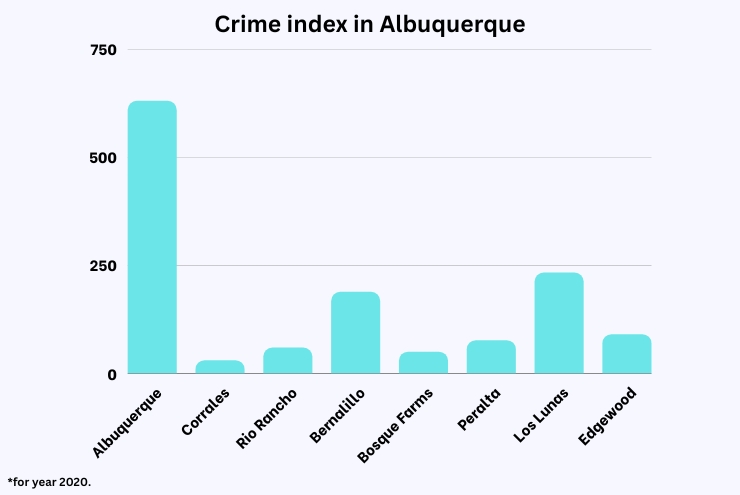
The city is focusing on comprehensive crime prevention strategies, community engagement, and economic opportunities to address its challenges.
Factors Contributing to Crime: Albuquerque, the largest city in New Mexico, is known for its rich cultural heritage and stunning natural landscapes. However, the city has also been grappling with high crime rates according to Pro-Move Logistics. Economic disparities, lack of access to quality education, and gang activities have been significant contributors.
7. Cleveland, Ohio: The Rock City’s Rough Side
- Violent crime rate: 3,031 incidents
- Property crime rate: 8,933 incidents
- Notable issue: High rates of property crime and drug-related violence.
Source: Best Places
Cleveland, known for its vibrant music scene and the iconic Rock and Roll Hall of Fame, faces a significant crime problem. In 2024, the city reported 21.5 homicides and 1,517.8 violent crimes per 100,000 residents.
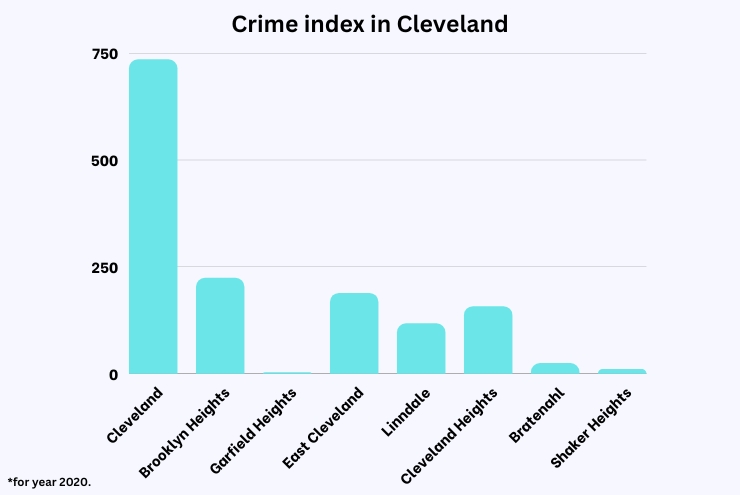
In Cleveland, I’ve noticed a proactive approach towards addressing crime issues. The city is investing in education and economic development, which seems like a wise move to tackle the root causes of crime. Additionally, the adoption of community-oriented policing strategies is fostering a stronger bond between law enforcement and residents. This multifaceted strategy appears to be a thoughtful way to create a safer and more prosperous community.
A friend in Cleveland took part in a unique ‘music against crime’ event where local musicians, including some from troubled backgrounds, performed across the city. This event not only provided a platform for talent but also brought the community together in a show of solidarity against crime.
Factors Contributing to Crime: Cleveland, known for its vibrant music scene and the iconic Rock and Roll Hall of Fame, faces a significant crime problem according to Ideastream. Economic challenges, drug addiction, and lack of access to quality education in certain areas have contributed to the city’s crime rates.
The number of homicides in the city is up about 20% compared to the same time last year, according to police records
Stated by Stephanie Czekalinski and Abigail Bottar from Ideastream.
6. Milwaukee, Wisconsin: The Brewing City’s Crime Stats
- Violent crime rate: 13,319 incidents
- Property crime rate: 9,604 incidents
- Notable issue: High rates of robbery and aggravated assault.
Source: Spotcrime.com
Milwaukee, Wisconsin famous for its brewing history, has been grappling with high crime rates. In 2024, the city reported 20.4 homicides and 1,333.4 violent crimes per 100,000 residents.
Factors Contributing to Crime: Milwaukee, famous for its brewing history, has been grappling with high crime rates stated by City of Milwaukee report. Economic challenges, drug addiction, and lack of access to quality education in certain areas have contributed to the city’s crime rates.
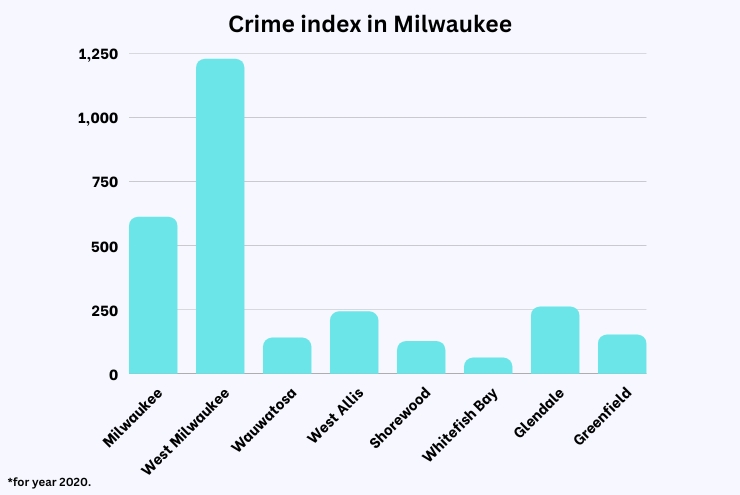
Milwaukee’s crime rates have been linked to economic segregation and urban poverty. Studies suggest that the disparity between different neighborhoods plays a critical role in the city’s crime scenario.
5. Little Rock, Arkansas: Underestimated Crime Challenges
- Violent crime rate: 3321 incidents
- Property crime rate: 10128 incidents
- Notable issue: High rates of property crime and gang-related violence.
Source: Littlerock.gov
Little Rock may not be as well-known as other cities on this list, but its crime rates are alarming. In the past, Little Rock reported 21.9 homicides and 1,517.2 violent crimes per 100,000 residents.
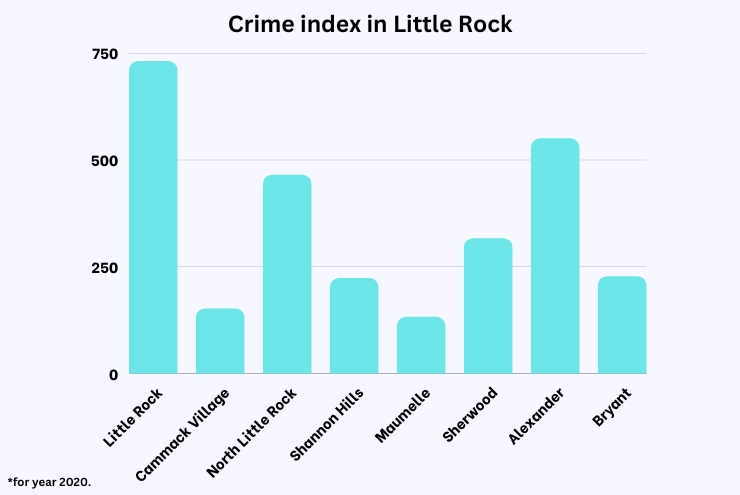
In Little Rock, a family friend is part of a project that refurbishes old, abandoned buildings into affordable housing and community centers. This initiative is not just addressing homelessness but also revitalizing neighborhoods and reducing crime by making these areas more inhabited and cared for.
Factors Contributing to Crime: Little Rock may not be as well-known as other cities on this list, but its crime rates are alarming stated by News Nation. Economic disparities, lack of access to quality education, and gang activities have been significant contributors.
In Little Rock, research points towards a high incidence of gang-related activities. The city’s crime rates are also influenced by factors such as poverty and limited access to social services.
4. Memphis, Tennessee: The Blues City’s Crime Blues
- Violent crime rate: 1,901 incidents
- Property crime rate: 6,405 incidents
- Notable issue: High rates of aggravated assault and property crime.
Source: Memphis Gov
Famous for its music scene and mouth-watering barbecue, Memphis also faces high crime rates. In the past years, Memphis recorded 28.7 homicides and 1,901 violent crimes per 100,000 residents.
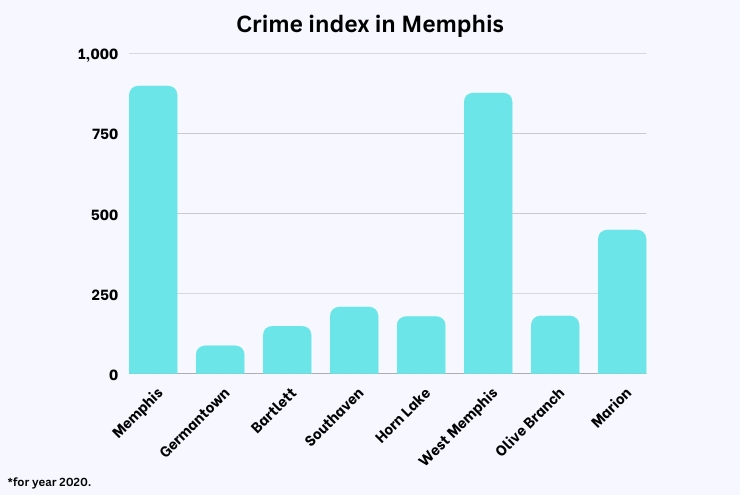
Efforts to address crime in Memphis include community policing, investments in education, and economic development initiatives as per report of the Police of Memphis.
A Memphis local shared their experience with a unique program where former gang members mentor at-risk youth. This peer-to-peer approach has been effective in reducing gang recruitment and violence, as it resonates more authentically with the youth
Factors Contributing to Crime: Famous for its music scene and mouth-watering barbecue, Memphis also faces high crime rates. The city’s vast size and economic disparities between neighborhoods have led to pockets of high crime. Memphis’ high crime rates are often studied in the context of socio-economic deprivation. Research indicates that issues like substandard education and lack of job opportunities contribute significantly to the city’s crime situation.
3. Baltimore, Maryland: Charm City’s Dark Side
- Violent crime rate: 11,101 incidents
- Property crime rate: 25,748 incidents
- Notable issues: High homicide rates and drug-related crime.
Source: FBI DATA (previously mentioned above)
Baltimore’s rich history and scenic harbor belie its struggle with crime. In recent years, the city reported a staggering 58.2 homicides per 100,000 residents and 1,925.5 violent crimes per 100,000 residents.
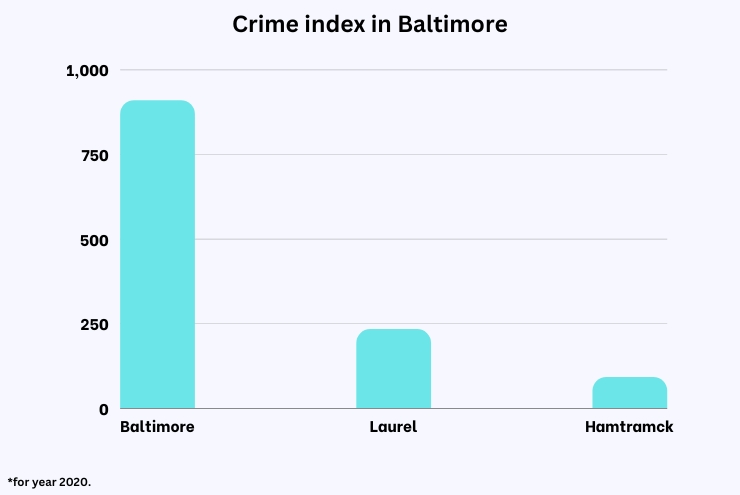
Baltimore is grappling with persistent challenges like poverty, drug issues, and gang violence. The city is earnestly working towards implementing comprehensive solutions to these deep-rooted problems. It’s a tough battle, but there’s a strong commitment to bring about positive change and address these issues head-on for the betterment of the community.
During a recent visit to Baltimore, I learned about a city-wide initiative where local artists and residents collaborate to create large-scale public art projects. These projects are aimed at fostering community pride and cohesion, which in turn has a positive impact on reducing vandalism and petty crime.
Factors Contributing to Crime: Baltimore’s rich history and scenic harbor belie its struggle with crime. Persistent issues such as poverty, drugs, and gang violence continue to plague Baltimore. Crime issues are closely linked to drug trafficking and socio-economic challenges. Studies reveal a complex web of gang violence and systemic poverty fueling the city’s crime rates.
2. Detroit, Michigan: Motor City’s Crime Dilemma
- Violent crime rate: 13, 705 incidents
- Property crime rate: 31, 630 incidents
- Notable issue: High rates of property crime and gang-related violence.
Source: Opendatanetwork.com
Once the epicenter of American automobile manufacturing, Detroit has faced economic decline, population loss, and urban decay, contributing to its high crime rates according to the New York Times. In recent years, Detroit reported 2,178.7 violent crimes per 100,000 residents and a homicide rate of 43.3 per 100,000. The city is working to rebuild its economy and infrastructure, but challenges remain.
In response to these challenges, Detroit has been working to revitalize its economy and improve residents’ quality of life. Efforts include attracting new businesses and investments, developing affordable housing, and implementing community policing strategies. Detroit’s economic downturn and urban decay play a significant role in its crime rates. Research points to the correlation between the city’s shrinking population, job losses in the automotive industry, and rising crime.
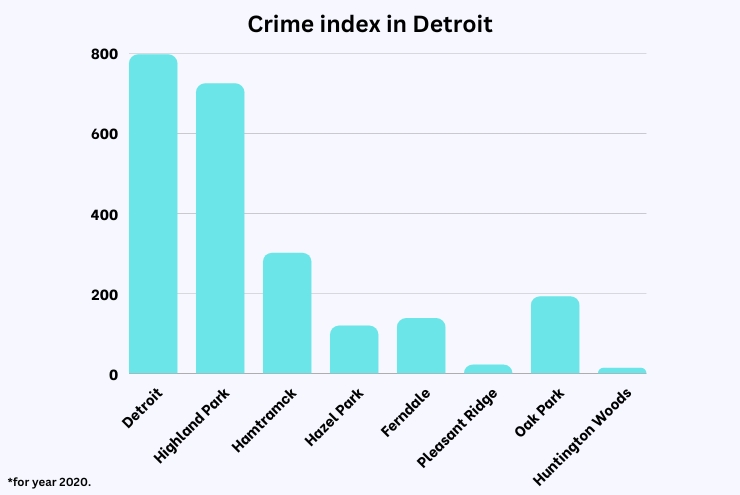
A cousin in Detroit is part of an urban farming initiative that’s transforming vacant lots into productive green spaces. This effort not only provides fresh produce to the community but also brings residents together, creating a sense of ownership and responsibility that helps in deterring crime.
Factors Contributing to Crime: Detroit has faced economic decline, population loss, and urban decay, contributing to its high crime rates. The city’s vast size and economic disparities between neighborhoods have led to pockets of high crime.
1. St. Louis, Missouri: The Gateway City’s Crime Gateway
- Violent crime rate: 14,788 incidents
- Property crime rate: 28214 incidents
- Notable issue: The city has the highest homicide rate in the country.
Source: St. Louis Police Department
Nestled on the banks of the Mississippi River, St. Louis is often referred to as the “Gateway to the West.” The city boasts a rich history deep-rooted love for baseball, and blues music. However, St. Louis also faces a notorious crime problem that has earned it a spot on our list of the most dangerous cities in the US stated by The Economic Times.
Factors Contributing to Crime: St. Louis consistently ranks among the cities with the highest crime rates per capita. Poverty, lack of economic opportunities, and racial tensions contribute to the city’s crime dilemma. St. Louis’ high crime rates are often attributed to systemic issues like poverty and racial segregation. Studies highlight the city’s struggle with economic disparities which exacerbate criminal activities.
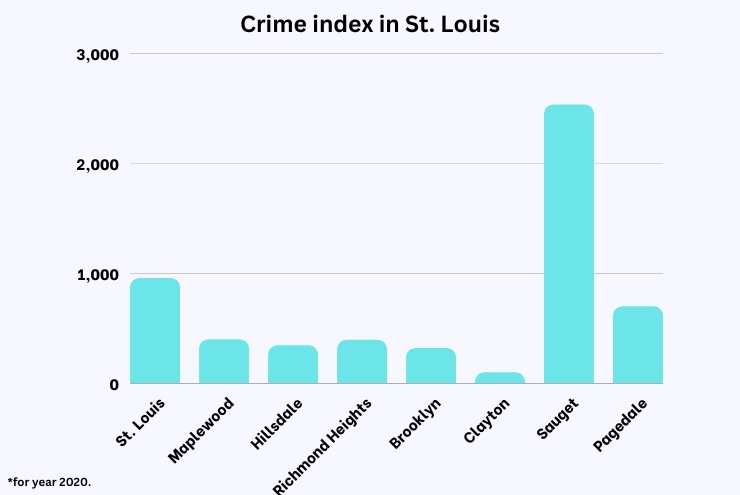
St. Louis consistently ranks among the cities with the highest crime rates per capita, with a staggering 87.8 homicides per 100,000 residents in recent years. Poverty, lack of economic opportunities, and racial tensions contribute to the city’s crime dilemma. Initiatives aimed at reducing crime and improving the quality of life for residents include community policing, investments in education and job training programs, and partnerships with local organizations.
A colleague from St. Louis is involved in a program that pairs tech professionals with youth to teach them coding and computer skills. This initiative not only opens up future job opportunities for these young individuals but also keeps them engaged and away from the streets, indirectly aiding in crime reduction.
Several Factors That Contribute to The High Crime Rates in These Cities:
- Poverty: High poverty rates often correlate with increased crime rates, as individuals struggle to meet their basic needs, leading to desperation and criminal behavior.
- Unemployment: Joblessness can result in increased criminal activity, as people turn to illegal means to generate income.
- Drug addiction and substance abuse: Substance abuse problems often lead to increased crime rates, both in terms of drug-related offenses and other crimes committed under the influence or to obtain drugs.
- Gang activity: High levels of gang activity can lead to violent crimes, turf wars, and drug trafficking.
- Insufficient law enforcement: A lack of resources or ineffective policing can result in higher crime rates, as criminals feel emboldened to commit offenses without fear of consequences.
“History provides us with numerous examples of people who were convinced that they were doing the right thing and committed terrible crimes because of it.”
Steps Being Taken to Reduce Crime Rates
Various measures are being implemented to reduce crime rates in these cities:
- Community Policing: We’re emphasizing community-based policing. This approach involves law enforcement officers collaborating closely with residents, addressing their concerns directly, and working together to prevent crime.
- Economic Development Initiatives: I’m seeing a significant investment in programs aimed at job creation and economic stimulation. By reducing poverty and unemployment, we aim to lower the overall crime rates.
- Drug Treatment Programs: We’re providing better access to addiction treatment and support services. This step is crucial not only in reducing drug-related crimes but also in improving the overall health of our communities.
- Gang Intervention and Prevention Programs: Tackling gang activity is a priority. We’re working on intervention programs specifically targeted at at-risk youth and implementing comprehensive strategies to dismantle criminal networks.
- Investment in Education: Increasing funding and resources for education is another key strategy. By creating more opportunities for young people, we hope to deter them from engaging in criminal activities.
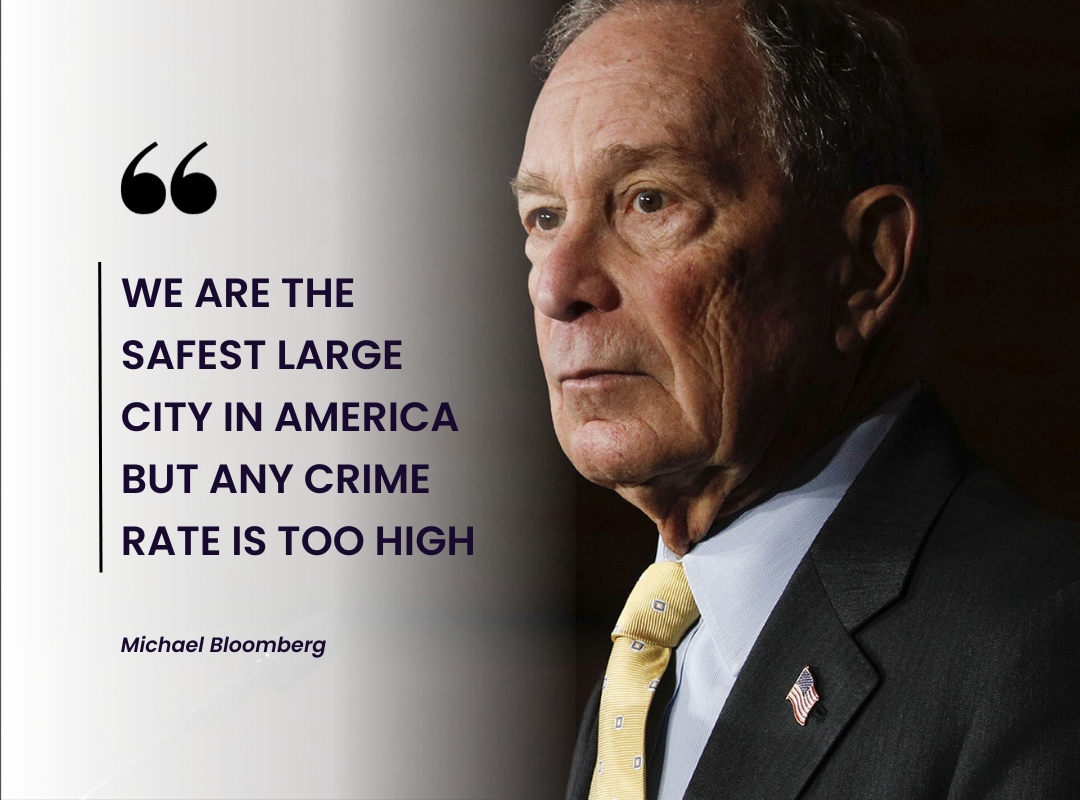
Comparing the Safety of the US with Other Nations
While the United States is relatively safe when compared to numerous countries, it doesn’t rank as favorably when juxtaposed with other developed nations, especially those in Europe. Data from the World Population Review places the US as the 36th most perilous country. Its peace index stands at 2.401. In contrast, Iceland, known for its tranquility, boasts a peace rating of 1.072, making it the 161st most perilous nation.
Such statistics indicate that, although the US is considerably more secure than countries facing severe turmoil like Afghanistan and Syria, it lags behind many of its developed counterparts in terms of safety.
Tips for Ensuring Safety While in the US
- Be vigilant about your environment and interactions.
- Trust the robust policing system for safety.
- Always lock doors and windows, whether at home or in a hotel.
- Stay conscious of your surroundings, both indoors and outdoors.
- Exercise caution when interacting with strangers.
- If in need, approach trusted community figures like police officers or established business owners.
- Travel in groups when exploring urban areas.
- Stick to populated and well-lit areas.
- Avoid flaunting expensive items or large amounts of cash.
- Following these guidelines can greatly reduce potential safety risks.
Frequently Asked Questions
1. What makes a city dangerous?
A city is considered dangerous when it has high crime rates, particularly in the areas of violent crime such as homicide, assault, rape, and robbery. A variety of factors can contribute to these crime rates, including poverty, unemployment, lack of access to education and social services, and gang activity.
2. How are the most dangerous cities in the US determined?
They are typically determined based on annual crime statistics published by the Federal Bureau of Investigation (FBI) and other law enforcement agencies. These statistics include data on violent crimes, property crimes, and overall crime rates.
3. What are some of the most dangerous cities in the US?
As of the knowledge cutoff in 2024, some of the most dangerous cities included St. Louis, Missouri; Detroit, Michigan; Baltimore, Maryland; Memphis, Tennessee; and Kansas City, Missouri. Keep in mind that crime rates and city rankings can change over time, so it’s important to consult the most recent data.
4. Are there any safe areas within dangerous cities?
Yes, there can be safe neighborhoods within these cities. Crime rates can vary greatly between different areas of a city, so it’s important to research specific neighborhoods when considering where to live or visit.
5. What can be done to make these cities safer?
Improving safety in these cities typically involves addressing the root causes of crime, such as poverty, unemployment, and lack of access to education and social services. This can include implementing community-based policing, investing in education and job training programs, and addressing systemic issues that contribute to crime.
6. Is it safe to travel to these cities?
While there may be risks associated with them, many people visit these cities without incident. It’s important to take precautions, such as researching the specific areas you plan to visit, avoiding high-crime neighborhoods, and being aware of your surroundings. It’s also a good idea to follow general safety tips, like not displaying valuables, traveling in groups, and staying in well-lit areas.
7. How do US cities compare to other dangerous cities around the world?
While some US cities have high crime rates, the most dangerous cities globally tend to be located in countries with high levels of violence, such as those affected by drug trafficking, gang violence, and political instability. Comparatively, most cities in the US are considered relatively safe when viewed on a global scale.
Conclusion
Although the cities listed above have high crime rates, it is essential to remember that crime can happen anywhere. The factors contributing to these crime rates are complex and multifaceted, and addressing them requires a comprehensive approach from both local governments and community members.
By understanding the causes of crime and working together to implement effective solutions, it is possible to make these cities, and the country as a whole, safer for everyone.
Sources:
https://www.city-data.com/crime/
NeighborhoodScout
https://www.cbsnews.com/pictures/the-most-dangerous-cities-in-america/
Disclaimer
Please note that the content provided here is based on personal opinions, expertise, and experiences, as well as information gathered from various online sources. It reflects an individual perspective and should be considered as a subjective interpretation of life. This narrative aims to share personal insights and experiences to offer a unique view of the city, rather than an exhaustive or universally applicable guide.

